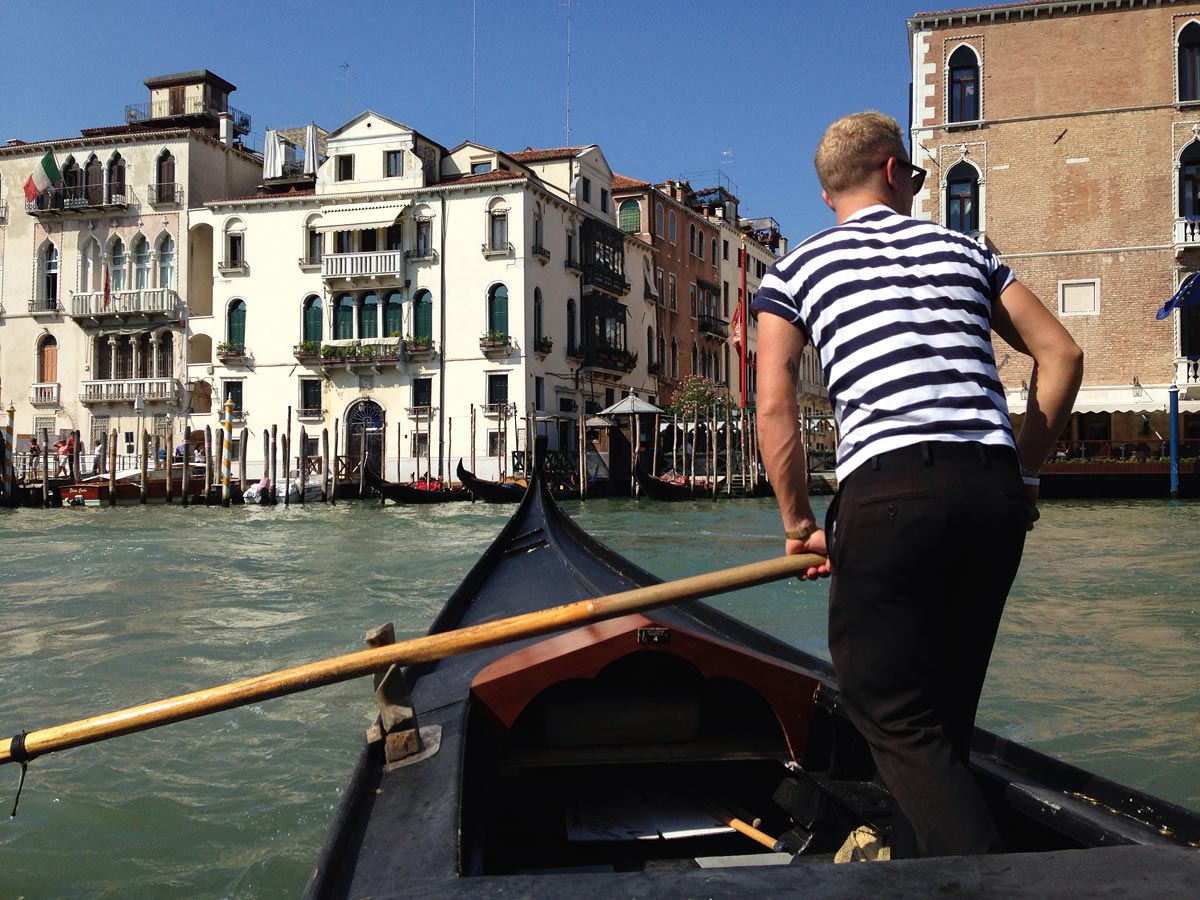Taylor Davidson · Venice, Italy

Leaving the peaceful, quiet, sun-soaked coast of Liguria and driving across the country to our last stop, tourist-packed Venice, was a tough shift.
Venice is famous for being one of the most beautiful, unique, and beguiling cities in the world. Shortly before visiting Venice I read John Berendt’s The City of Falling Angels, which was an exploration of Venetian culture and society, through the lens of few of it’s most public figures. While Berendt’s Midnight in the Garden of Good and Evil was well-received by Savannah and created opportunities for the city to profit from the book, Venice basically ignored the book. The reasons are many, but most of all, I think it’s because Venice doesn’t need an author’s tell-all to draw visitors to the city.
If you’ve visited Venice, you’ve surely found that out. Each day, more than 60,000 people visit the city, more than the population of the historic central city itself. And it shows. Everywhere, everything, seems to cater to tourists. And in many ways, it’s driven out the locals. Venice’s population has dropped by two-thirds since the 1950s. Career opportunities, prices, and quality of life have driven people out of Venice to the mainland over the years.
But while the “real Venice” may be gone or dying for the locals, it remains an incredibly unique city for the tourist. The key is that the true uniqueness doesn’t lie in St. Mark’s Basilica, Piazza San Marco, or the Rialto Bridge; it lies where the tourists don’t go. Even in Venice, by taking a turn or three down the side streets, we were able to find places where the tourists don’t go. We found amazing places to eat in the outskirts of the Dorsoduro, Guidecca, and Cannareggio; we spent a peaceful afternoon in the cemetary at Isola San Michele, and we had our own beautiful walks along the water at night, almost completely to ourselves.
We spent one lazy afternoon a couple blocks off a major tourist area enjoying a long lunch and a couple Aperol spritzes, watching people turn off the major road and walk down the little side street we were enjoying. We started taking bets whether they were locals or tourists, if they would walk to the end of the road, and which way they would turn: left, right, or back completely to the main street. It was basically a bet about a) how well they knew where they were going, and b) how adventurous they were. At the end of our lunch, we took a walk down to the same end of the street where we had watched people turn every which way for hours, and we turned our own way and made our own adventure.
Couple reflections from Venice:
- We stayed at a simple hotel in the Dorsoduro. It’s easy to find an expensive hotel in a tourist-packed location in Venice, but it’s worth the effort to find a place outside the center that can offer a different experience. As always, location matters.
- Musuems. There’s a ton of them. Don’t worry about seeing all of them, choose the ones that matter to you. We enjoyed the Peggy Guggenheim and a number of smaller art museums, but skipped the major attractions, since we had already seen a lot of big art and historical museums throughout Italy.
- Boats. The amazing thing about Venice isn’t just the quantity of boats, but the variety of them. Commercial barges, commercial transport (UPS and DHL), vaporettos, traghettis, gondolas, water taxis, and private boats. It’s amazing.
- Everyone says it’s expensive, and it is. The day pass for a vaporetto is crazy. But if you enjoy a day on the vaporetto, using it less as transport and more as an experience, it can be great fun.






